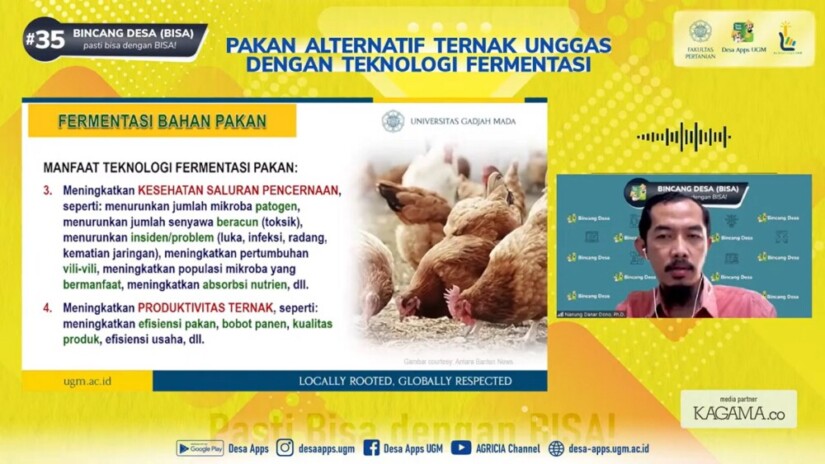
Poultry farmers spend up to 60% of their total cost on feed. Dependence on imported feed ingredients causes feed mills to sell commercial feed at high prices, forcing farmers, especially small-scale ones, to look for alternatives to reduce costs without compromising feed quality.
“Fermented chicken feed can be an alternative for smallholders to catch up with commercial feed,” said Dr. Nanung Danar Dono on a webinar held by the Desa Apps UGM, Saturday (19/2).
Fermentation is a process that involves microbes, substrates, and precise environmental conditions to convert complex compounds into simpler, more useful ones. Temperature, pH, the chemical composition of the media, planting of precursors, mixing process, length of fermentation time, quality of fermenter material are several factors that can affect the quality of fermentation products.
“In addition to improving nutritional quality, feed fermentation can increase the benefits of feed ingredients,” he said.
Improvements in nutritional quality include increased protein, decreased crude fiber, decreased anti-nutritional compounds, decreased toxins, and increased feed digestibility. Fermented feed will also increase the concentration of probiotics and organic acids, lower pH, and reduce pathogen contamination.
Several fermentations to improve poultry growth performance and increase ADG (Average Daily Gain) are wheat fermentation with Lactobacillus fermentum and Bacillus subtilis, soybean meal fermentation with Aspergillus oryzae, kapok seed fermentation with Bacillus subtilis BJ-1, and seaweed fermentation with Bacillus subtilis and Aspergillus oryzae.
Watch the webinar here, available in Indonesian only.
Author: Khansa

